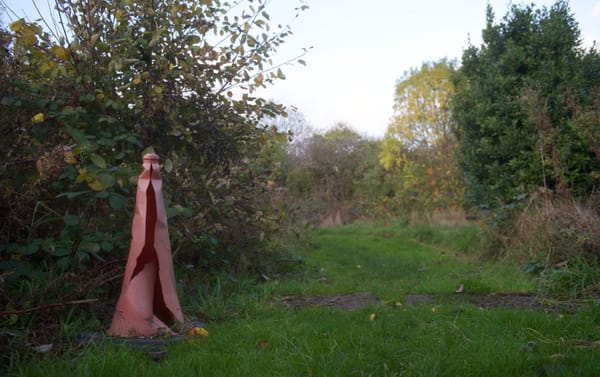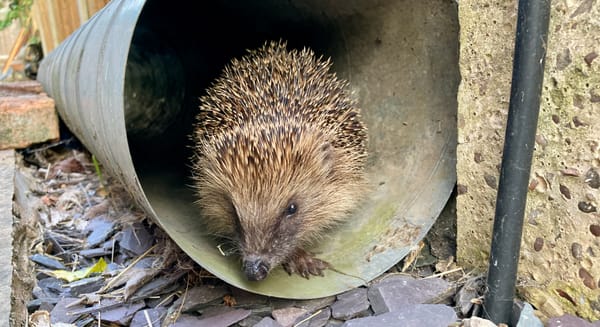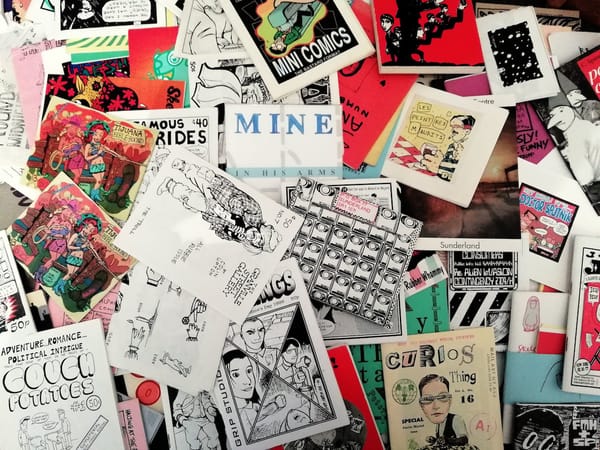The Aerobic Digest 9: Spreading on the beds
There's something very satisfying about seeing your compost spread across the allotment, ready to feed this year's crops.
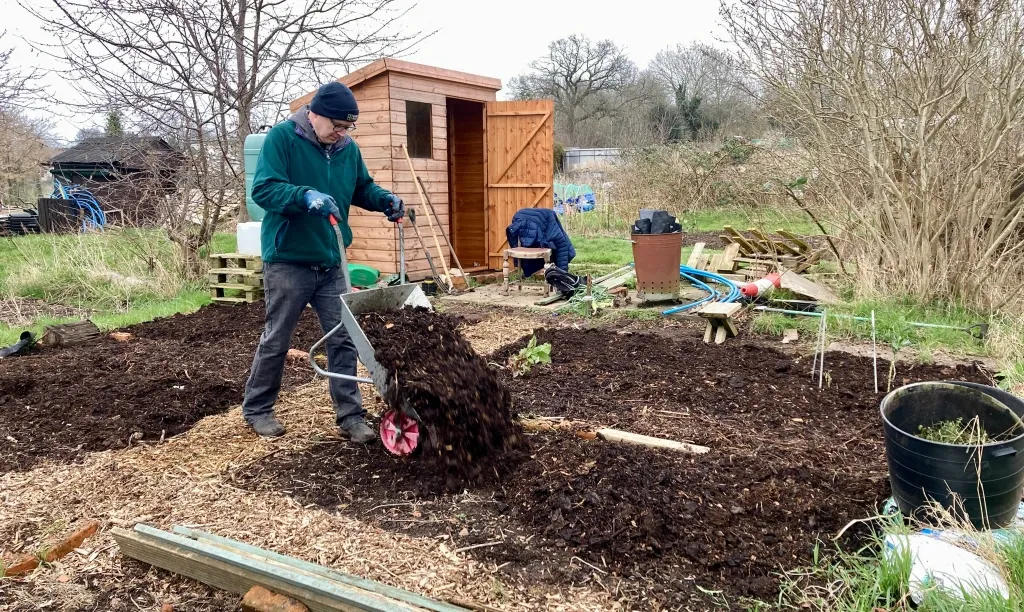
Today I was joined on the plot by my friend Valentina. Val needed to get out of the office, and I needed someone to help me shift a shittonne of compost from one place to another. Win-win!
I’m still on rest and recuperation - I wrote about my burnout in more detail on my non-compost blogletter - and all four of my heaps are now full. I urgently needed to empty the fourth storage bay onto Fiona’s beds to free up the third resting bay so it can take the contents of the second while the first rests. I equipped Val with a pitchfork and wheelbarrow and she got to work for an hour, leaving me to swoop in and finish it off.

This was the batch I wrote about in October, started when I had Long Covid and capped off when my parents died. As such it’s one of my worst attempts at composting, but I can forgive myself.
The final results were not too terrible. Lots of matted newspaper, which was annoying to remove, but otherwise a pretty decent mulch. We were able to cover five beds with a decent thickness ready for spring planting. Nice.
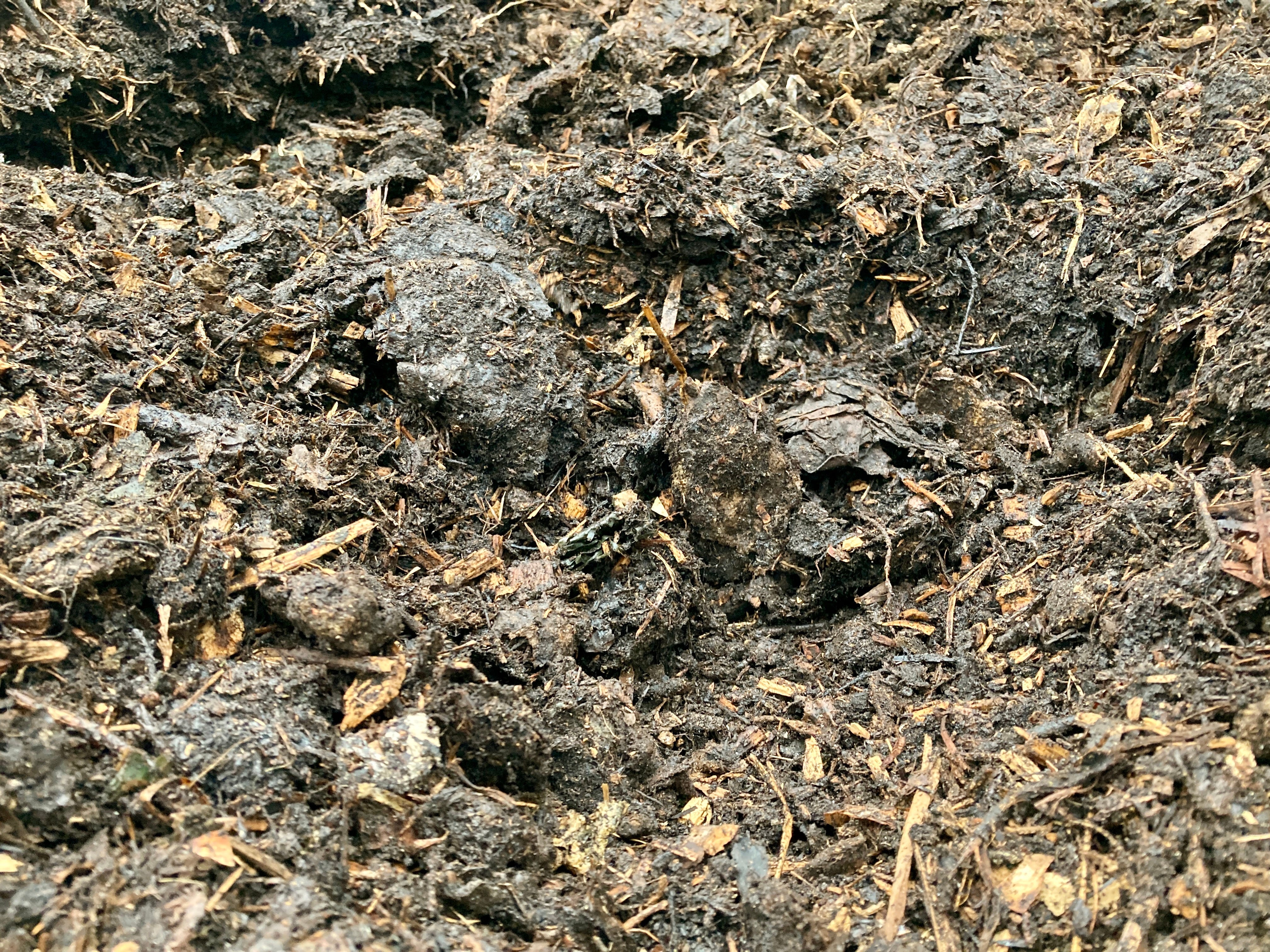
The compost itself was the right level of damp and crumbly. A few lumps but nothing the worms won’t sort out.

We filled a tub with matted and uncomposted newspaper which I didn’t want to put on the beds. It’s still good carbon so I’ll tear it up and add it to the next active bay. But other than this and a few small clumps of hay, everything else had broken down.

Action shot!

Five-and-a-bit beds covered in nutritious mulch. Now it’s over the to the worms and other macro-organisms to pull it into the soil. (We also topped up the paths with some rather dark wood chip - those strips marked by the bricks are not compost!)
Now I have an empty bay and the next time Val is free we can do the decanting of 2 to 3 and 3 to 4 and get to work filling up 2 again. It never ends!
I’ve collected a LOT of compost-related links over the last couple of months and I’m going to dump some of them here with a bit less commentary than usual. You can find all my composting bookmarks on this page.
Soil Food Web videos
I’ve been really impressed with the last two videos Dr. Elaine’s Soil Food Web have included in their email newsletter. They’re the clearest explainers of what’s actually going on when add compost to a no-dig bed that I’ve ever seen and I commend them to the community.
Nutrient Cycling looks at what and how plants take from the soil, while Formation of Structure is a deep dive (deep dig?) into how to renew compacted or damaged soil. I sent the second one to my sister who had asked me to explain what soil actually was and it really helped her to get it.
A terrible compost quiz
Amusingly I got Dr Elaine’s newsletter after doing their online quiz, which got our Birmingham composting WhatsApp group in quite a tizz because it, frankly, not very good at all! Take this question:
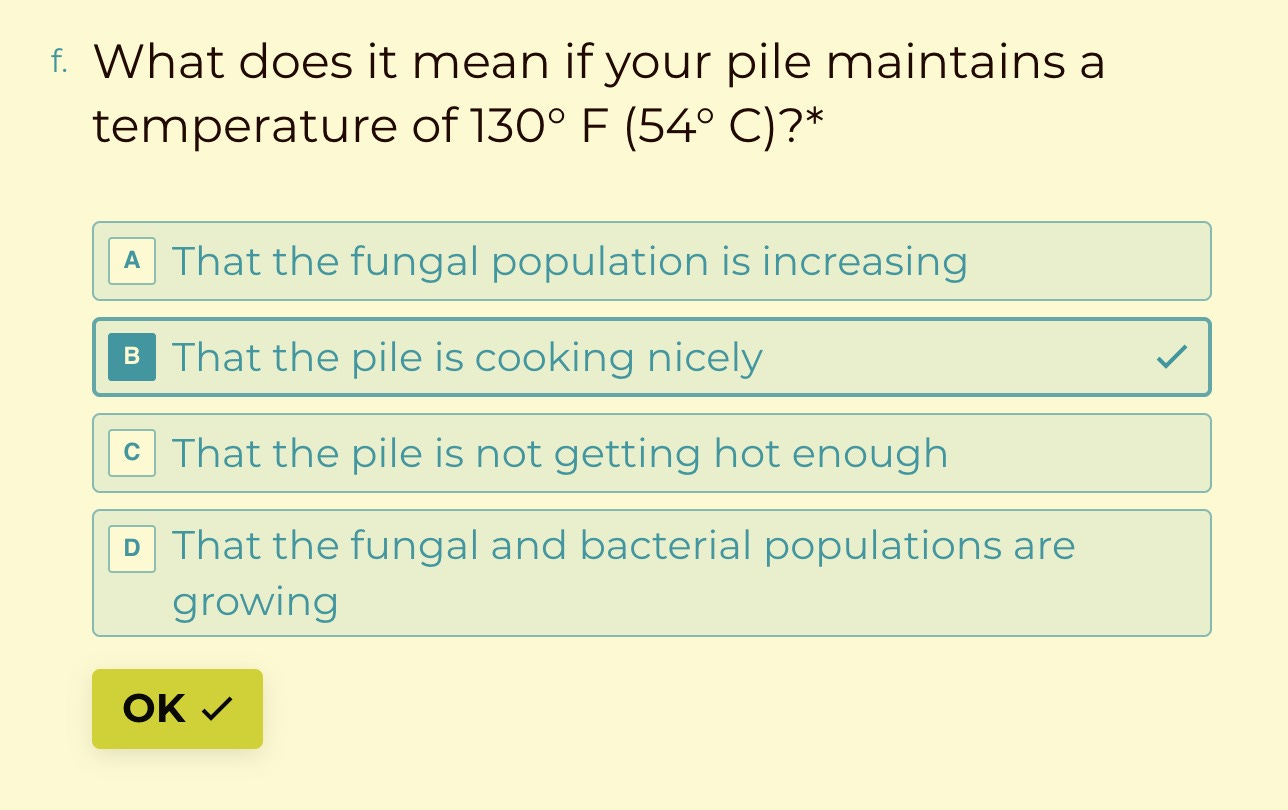
I hope you’d agree that B is the correct answer. After an initial burst in the 60s to kill any seeds and diseases, I’d be happy if my piles stayed around 50 degrees for a couple of months as they do their thing. But this is the “correct” answer.

Which, as I hope you’ll notice, was not one of the options given, and is also nonsense. You need oxygen to get heat - a compost heap above ambient temperature cannot be anaerobic, surely? (Do let me know if I’m mistaken.)
Community composting in the news
Hartcliffe resident recycles community food waste for compost scheme (BBC). Not much detail but it looks like it’s funded by a local charity and is using a Ridan composter.
Marldon community launches its own composting group (BBC). Again, scant information, but this one looks like it’s in collaboration with the council’s parks staff.
Six inches of soil - a documentary feature film
Six inches of soil is a documentary about regenerative farming in the UK. While I’m very interested in this subject, there’s something about the trailer that rubs me the wrong way (earnest middle class people blaming consumers perhaps…) so I’m reserving judgement until I see it.
Assessing soil health using a microscope
I know I’ll be doing in this a few years time, and it looks great fun.
Idaho lawmaker says human composting could lead to cannibalism
Nonsense, of course, and highlights a fascinating anthro-centric ignorance about how organic matter decays.
Illustration of the anatomy and structure of an earthworm
It turns out earthworms have five hearts. ❤️❤️❤️❤️❤️
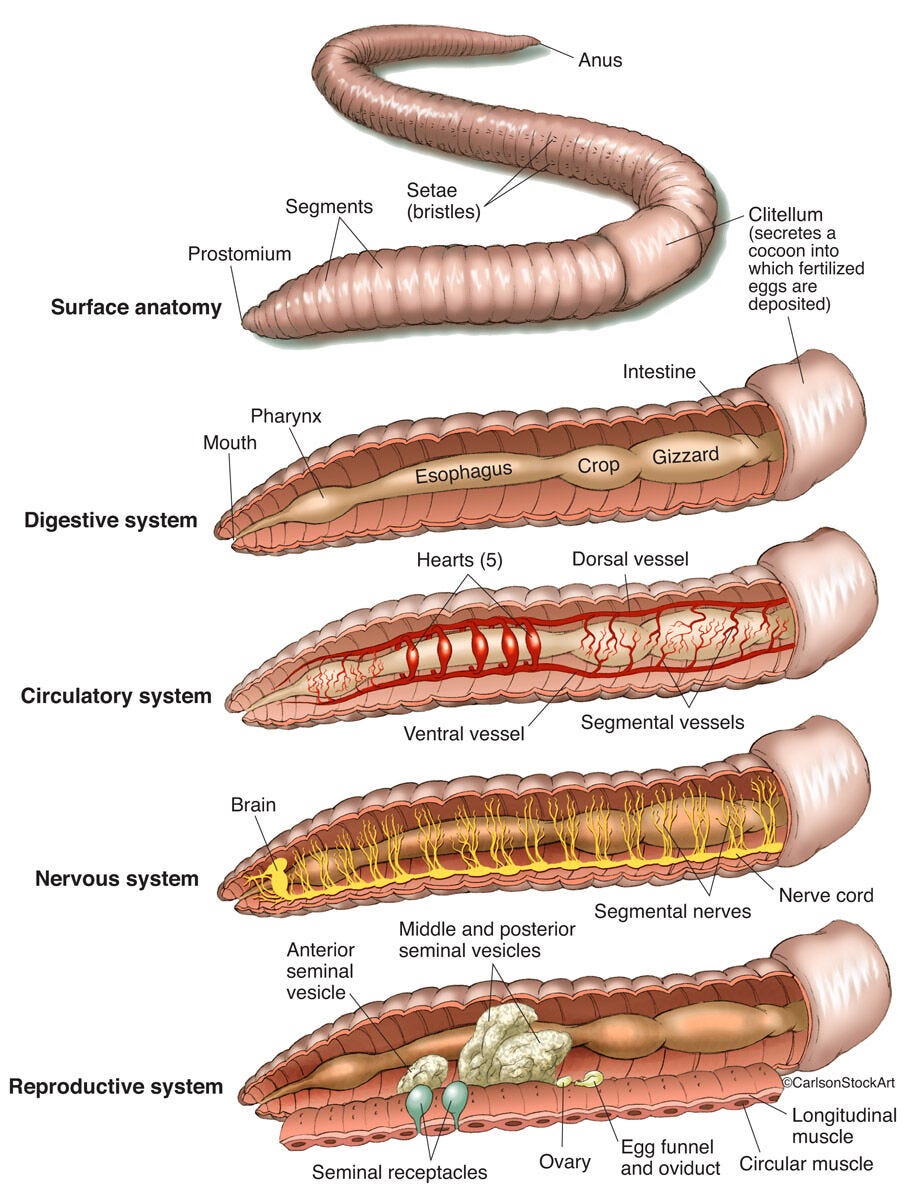
Optimizing food waste composting
Tim O’Neill and Ryan Costello’s study looks at an issue I hadn’t considered: composting facilities that have traditionally processed materials from parks and gardens are now being asked to deal with household and commercial food waste. This is a very different proposition with a much lower pH and needs to be treated differently. via
A short hugelkultur video
I continue to be interested in hugelkultur, from the use of wood that won’t easily compost to the water-retention properties, but there’s a lot out there. This is probably the best short introduction I’ve found.
That’ll do for now!
Please continue to send compost-related things to info@aerobicdigest.email or @ me on Mastodon where I keep tabs on the #compost tag.
Your friend in rotting vegetable matter,
Pete Ashton
